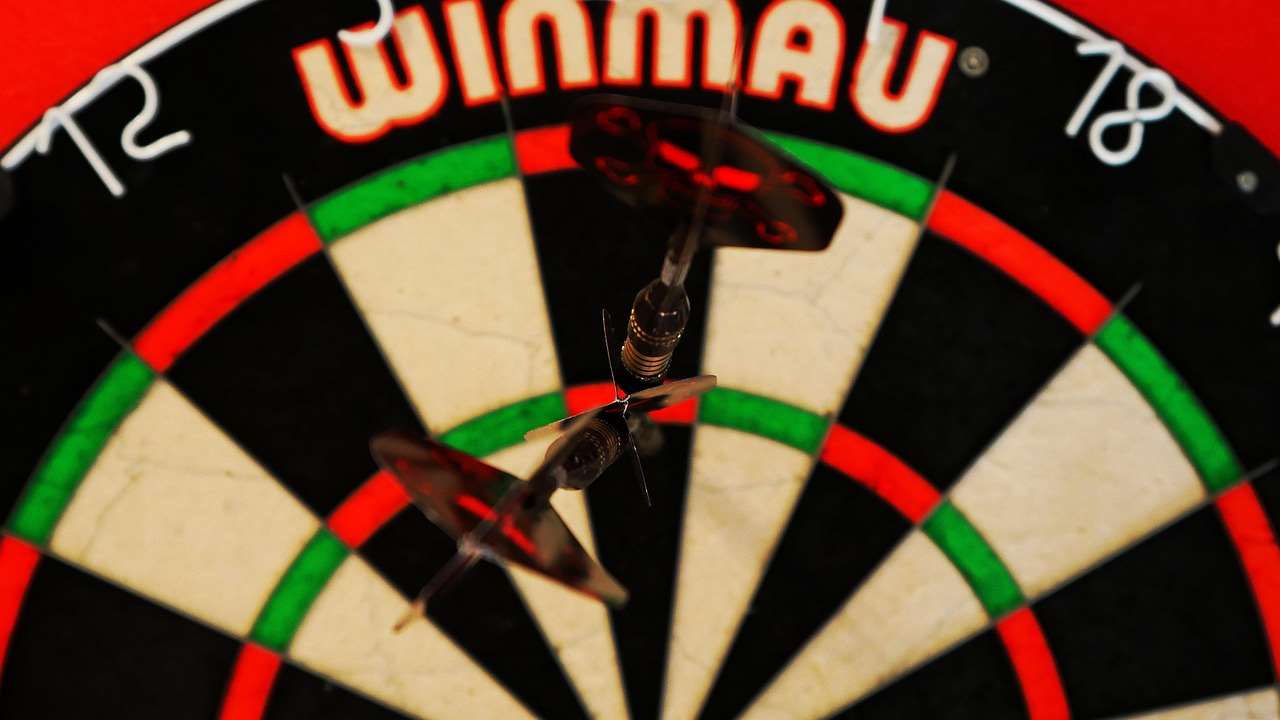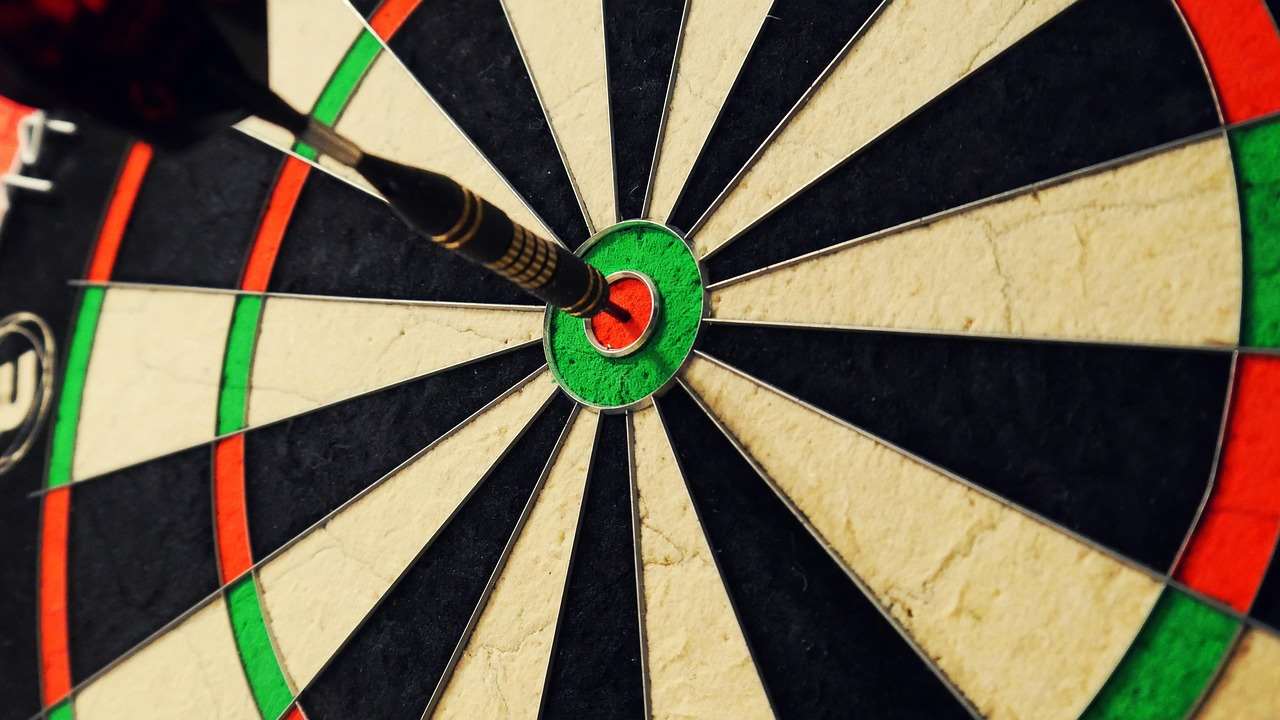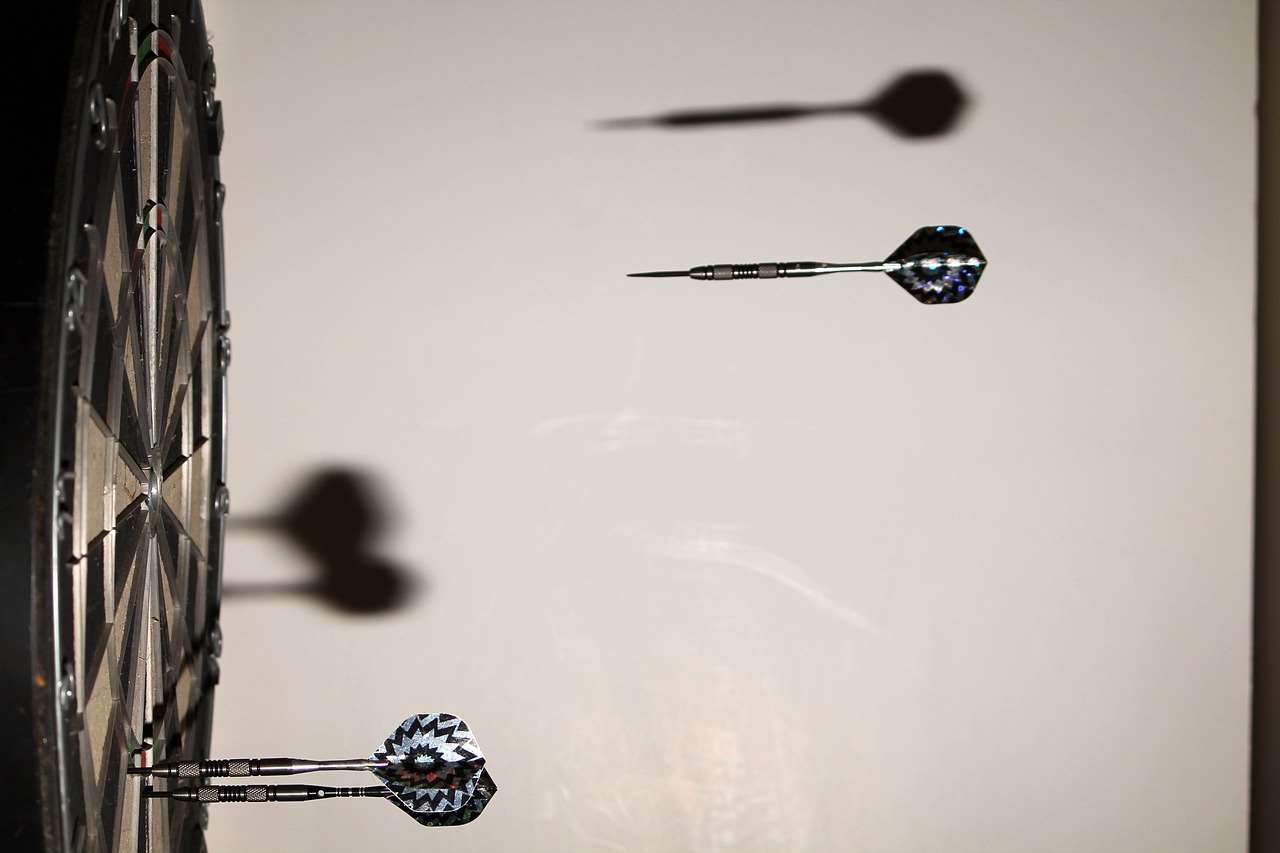Getting your darts setup right is crucial for enjoying the game and improving your accuracy; proper board height and distance are key. This article provides a comprehensive guide to setting up your dartboard correctly, covering everything from measurements and equipment to lighting and safety tips, ensuring you have the perfect playing environment.
⚠️ Still Using Pen & Paper (or a Chalkboard)?! ⚠️
Step into the future! The Dart Counter App handles all the scoring, suggests checkouts, and tracks your stats automatically. It's easier than you think!
Try the Smart Dart Counter App FREE!Ready for an upgrade? Click above!
Understanding the Standard Darts Setup Measurements
The world of darts, from casual pub games to professional tournaments, adheres to specific measurements to ensure fair play. Knowing these measurements is the first step in creating your ideal darts setup.
- Dartboard Height: The center of the bullseye should be exactly 5 feet 8 inches (1.73 meters) from the floor. This is a universal standard for both steel tip and soft tip darts.
- Throwing Distance: This is measured from the face of the dartboard to the oche (throwing line). For steel tip darts, the distance is 7 feet 9 1/4 inches (2.37 meters). For soft tip darts, it’s typically 8 feet (2.44 meters), although this can vary slightly depending on the league or organization.
- Diagonal Distance: You can also measure diagonally from the bullseye to the oche. This measurement should be 9 feet 7 3/8 inches (2.93 meters) for steel tip darts.
It’s vital to use a reliable measuring tape to ensure accuracy. Even slight deviations can impact your throwing stance and consistency. Consider using a laser level to verify the dartboard height is perfectly plumb.

Choosing the Right Dartboard and Darts
Your darts setup isn’t just about measurements; it also involves selecting the right equipment. The quality of your dartboard and darts can significantly influence your gameplay. Let’s break down the key considerations:
Dartboard Types
There are primarily two types of dartboards:
- Bristle Dartboards: Made from sisal fibers compressed together, bristle dartboards are the standard for steel tip darts. They are self-healing, meaning the holes close up when the dart is removed. Look for a high-quality board with minimal staples and a thin wire spider.
- Electronic Dartboards: Designed for soft tip darts, electronic dartboards have small holes that the plastic tips fit into. They often feature scoring systems and game variations. Consider the durability and responsiveness of the board when making your selection.
Selecting Your Darts
Darts come in a variety of weights, materials, and styles. Finding the right darts for your grip and throwing style is crucial. Key factors to consider include:
- Weight: Darts typically range from 18 to 30 grams. Experiment to find a weight that feels comfortable and allows for consistent throws.
- Material: Tungsten darts are denser and more durable than brass darts, allowing for slimmer barrels and tighter groupings.
- Grip: Darts come with different grip patterns, from smooth to knurled. Choose a grip that provides adequate control without being too abrasive.
Consider consulting with a local darts expert or trying out different darts before making a purchase. Properly weighted and gripped darts can dramatically improve your dart accuracy.
Step-by-Step Guide to a Perfect Darts Setup
Now, let’s walk through the process of setting up your dartboard. This section provides a clear and concise guide to achieving a perfect darts setup:
- Mount the Dartboard: Using a measuring tape and level, mark the position for the bullseye at 5 feet 8 inches from the floor. Securely mount the dartboard to the wall using appropriate hardware (screws, anchors, or a mounting bracket). Ensure the board is stable and doesn’t wobble.
- Mark the Oche: Measure the throwing distance (7 feet 9 1/4 inches for steel tip, or the specific distance for your soft tip board) from the face of the dartboard. Mark this point on the floor with tape or a raised oche. The oche should be clearly defined and consistently used.
- Check the Alignment: Use a laser level or plumb bob to ensure the dartboard is perfectly vertical and the oche is directly in front of the center of the board.
- Test Your Setup: Throw a few darts to get a feel for the setup. Make any necessary adjustments to the board height or oche position based on your personal preference and throwing style.

Pay close attention to detail during this process. A slightly off-center dartboard or an incorrectly positioned oche can significantly impact your game. Use reliable tools and double-check all measurements.
Dartboard Lighting: Illuminating Your Game
Adequate lighting is essential for a proper darts setup. Poor lighting can strain your eyes and make it difficult to see the target clearly. Here’s what you need to know about dartboard lighting:
Types of Dartboard Lighting
- Surround Lighting Systems: These systems consist of a ring of lights that surrounds the dartboard, providing even illumination across the entire surface.
- Overhead Lighting: A single light fixture positioned directly above the dartboard can also provide adequate lighting, but it may create shadows.
- Side Lighting: Avoid side lighting, as it can cast harsh shadows and make it difficult to see the board clearly.
Choosing the Right Lighting
When selecting dartboard lighting, consider the following factors:
- Brightness: Choose a light source that provides sufficient brightness without being too harsh. LED lights are a popular option due to their energy efficiency and long lifespan.
- Color Temperature: Opt for a warm white or natural white light, as these colors are less straining on the eyes.
- Adjustability: Look for lighting systems that allow you to adjust the brightness and angle of the light.
Proper lighting can significantly improve your accuracy and reduce eye strain, allowing you to play for longer periods of time comfortably. A well-lit dartboard is a key component of a professional darts setup. You can also check out target darts corona vision for options.
Essential Accessories for Your Darts Setup
Beyond the dartboard, darts, and lighting, several accessories can enhance your darts setup and improve your overall playing experience:
- Dartboard Surround: A dartboard surround protects your wall from stray darts and provides a professional look.
- Oche Mat: An oche mat clearly marks the throwing line and provides a comfortable surface to stand on.
- Dart Case: A dart case protects your darts from damage and keeps them organized.
- Dart Sharpener: A dart sharpener keeps your dart points sharp, ensuring they stick properly in the board.
- Scoreboard: Choose either a traditional chalkboard scoreboard or a modern electronic scoreboard to keep track of your scores.
Investing in these accessories can enhance your playing experience and protect your equipment. These items can be found at dart shafts for sale.
Safety Considerations for Your Darts Setup
Safety should always be a top priority when setting up your dartboard. Follow these safety guidelines to prevent accidents and injuries:
- Clear the Area: Ensure there is ample space around the dartboard and throwing area. Remove any obstacles that could be tripped over.
- Protect Spectators: Keep spectators a safe distance away from the throwing area.
- Supervise Children: Never allow children to play darts unsupervised.
- Use a Dartboard Surround: A dartboard surround can help prevent darts from ricocheting off the wall.
- Inspect Darts Regularly: Check your darts for damage before each game. Replace any broken or damaged darts immediately.
By following these safety precautions, you can create a safe and enjoyable environment for playing darts.

Maintaining Your Darts Setup
Proper maintenance will ensure that your darts setup lasts for years to come. Here are some tips for keeping your dartboard and darts in top condition:
- Rotate Your Dartboard: Regularly rotate your bristle dartboard to distribute wear and tear evenly.
- Clean Your Dartboard: Use a soft brush to remove dust and debris from your dartboard. Avoid using water or harsh chemicals.
- Sharpen Your Darts: Keep your dart points sharp by using a dart sharpener regularly.
- Replace Flights and Shafts: Replace worn or damaged flights and shafts to maintain optimal dart performance.
- Store Darts Properly: Store your darts in a dart case to protect them from damage.
Consistent maintenance will prolong the life of your equipment and ensure optimal performance.
Advanced Tips for Fine-Tuning Your Darts Setup
Once you’ve mastered the basics of darts setup, you can start fine-tuning your environment to optimize your performance. Here are some advanced tips:
- Experiment with Oche Height: While the standard height for the oche is ground level, some players find that raising the oche slightly improves their throwing stance.
- Adjust Lighting Angle: Experiment with the angle of your dartboard lighting to minimize shadows and maximize visibility.
- Use a Dartboard Calibration Tool: A dartboard calibration tool can help you ensure that your dartboard is perfectly level and aligned.
- Practice with Different Setups: Try practicing with different dart weights, shaft lengths, and flight shapes to find the combination that works best for you.

Remember, the perfect darts setup is a personal preference. Experiment with different configurations to find what works best for your individual throwing style and playing environment. You can get darts score help and learn the best way to keep track of score too.
Troubleshooting Common Darts Setup Issues
Even with careful planning, you might encounter some common issues during your darts setup. Here’s a quick guide to troubleshooting these problems:
- Dartboard Wobbles: Ensure the dartboard is securely mounted to the wall using appropriate hardware. If necessary, use shims to stabilize the board.
- Darts Bounce Out: Sharpen your dart points and ensure the dartboard is not too dry. Consider using a dartboard treatment to increase the board’s moisture content.
- Poor Lighting: Adjust the angle and brightness of your dartboard lighting to eliminate shadows and improve visibility.
- Inconsistent Throws: Double-check your oche distance and dartboard height to ensure they meet the standard measurements.
Addressing these issues promptly will help you maintain a consistent and enjoyable playing experience.
Conclusion
Creating the ideal darts setup involves careful attention to detail, from precise measurements and equipment selection to lighting and safety considerations. By following the guidelines outlined in this article, you can establish a comfortable and consistent playing environment that will enhance your enjoyment of the game and help you improve your skills. Remember to prioritize safety, maintain your equipment, and experiment with different configurations to find the perfect setup for your individual needs. Now that you’ve mastered the art of darts setup, grab your darts and start playing! Check out Practice darts app with scoring for more ways to perfect your game!
Hi, I’m Dieter, and I created Dartcounter (Dartcounterapp.com). My motivation wasn’t being a darts expert – quite the opposite! When I first started playing, I loved the game but found keeping accurate scores and tracking stats difficult and distracting.
I figured I couldn’t be the only one struggling with this. So, I decided to build a solution: an easy-to-use application that everyone, no matter their experience level, could use to manage scoring effortlessly.
My goal for Dartcounter was simple: let the app handle the numbers – the scoring, the averages, the stats, even checkout suggestions – so players could focus purely on their throw and enjoying the game. It began as a way to solve my own beginner’s problem, and I’m thrilled it has grown into a helpful tool for the wider darts community.